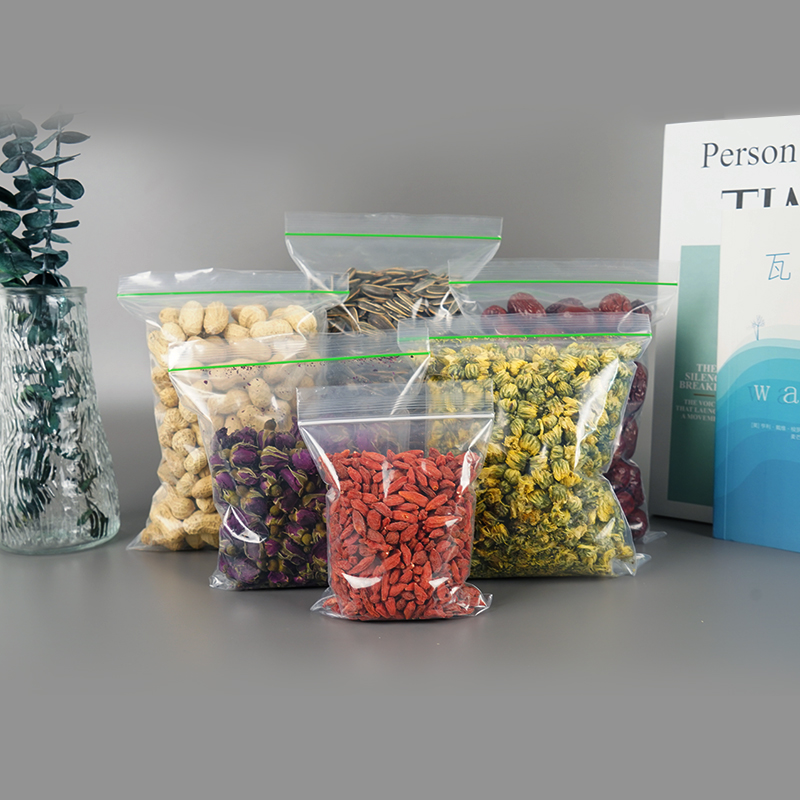When it comes to discussing plastics, there’s often a misconception that all plastics are inherently harmful to the environment. However, not all plastics are created equal. Polyethylene (PE) plastic, commonly used in products like ziplock bags, zipper bags, PE bags, and shopping bags, offers numerous advantages that make it a valuable material across various industries. This article explores the benefits of PE plastic, addresses common concerns, and clarifies misconceptions, all while focusing on the positive aspects of this versatile material.
The Advantages of PE Plastic
1. Versatility in Product Applications PE plastic is a highly versatile material that can be used in a wide range of products, including ziplock bags, zipper bags, PE bags, and shopping bags. Its flexibility, durability, and resistance to moisture make it an ideal choice for packaging and storage solutions. Whether you’re looking for a way to keep food fresh or organize household items, PE plastic products provide a reliable and efficient solution.
2. Environmental Benefits and Recyclability Contrary to popular belief, PE plastic is not necessarily detrimental to the environment. One of its significant advantages is its recyclability. PE plastic can be recycled and transformed into new products, reducing the need for virgin plastic production and minimizing waste. Many recycling programs accept PE plastic, making it easier for consumers to dispose of it responsibly.
3. Cost-Effectiveness PE plastic is a cost-effective material that helps reduce production costs in various industries. Its lightweight nature lowers transportation costs, while its durability extends the lifespan of products, reducing the need for frequent replacements. These factors make PE plastic an economically viable option for manufacturers and consumers alike.
4. Widespread Industry Use The wide range of applications for PE plastic spans multiple industries, including packaging, construction, agriculture, and healthcare. Its chemical resistance and durability make it suitable for protective coverings, pipes, and medical supplies. This widespread use underscores the importance of PE plastic in modern society.
Common Misconceptions About PE Plastic
Is PE Plastic Really Harmful to the Environment? One common misconception is that all plastics are equally harmful to the environment. However, PE plastic’s recyclability and lower carbon footprint compared to other materials make it a more sustainable option. Additionally, advancements in recycling technologies continue to improve the efficiency of recycling PE plastic, further reducing its environmental impact.
Are There Safer Alternatives? While some alternatives to PE plastic exist, they often come with their own set of challenges, such as higher costs or limited availability. Moreover, PE plastic’s unique properties, such as its flexibility and moisture resistance, make it difficult to replace in certain applications.
Supporting Data and Research
Research has shown that PE plastic has a lower carbon footprint than other common materials, such as glass and aluminum, when considering the entire lifecycle from production to disposal. Additionally, data from recycling programs indicate that the rate of PE plastic recycling has been steadily increasing, demonstrating the growing awareness and capability of recycling this material.
Insert Graph/Statistic Here: Graph showing the increasing rate of PE plastic recycling over the years.
Conclusion
PE plastic, commonly used in products like ziplock bags, zipper bags, PE bags, and shopping bags, offers numerous benefits that make it a valuable material in various industries. Its versatility, recyclability, cost-effectiveness, and widespread use highlight its importance in modern society. While concerns about plastic pollution are valid, it’s crucial to recognize the positive aspects of PE plastic and consider the progress being made in recycling and sustainability.
Post time: Aug-02-2024





